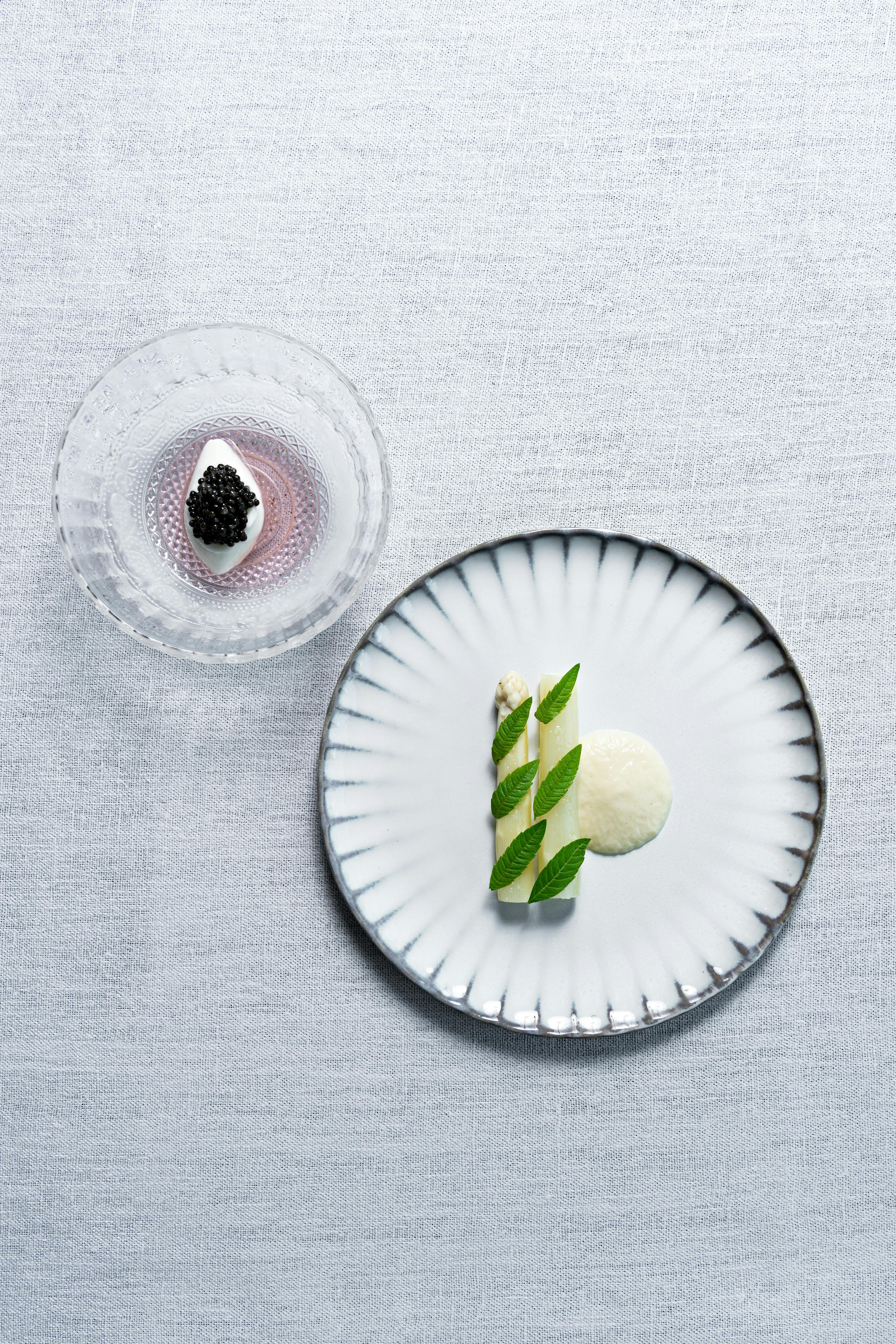A Chef's Poetry
Three rhythms of the white asparagus
At Michelin Star Restaurant Äng, pearls are not only found in oysters. In an ivory-coloured dream, Filip Gemzell honours white asparagus, a rarity given its short season. This European delicacy grown completely under the soil, hence its white colour, comes around for a maximum of four weeks in Sweden.
“We only work with local producers so we only have that very limited 3-4 week window per year.” Filip explains. “Sweden is quite good with green asparagus, but they are a bit thinner and more delicate in flavour”.
In Skåne, Filip found the product he was after. German-led Österlen Sparris produces the hard-to-find ingredient, and the main character in this complex plate.
“I would say the asparagus we use is more similar to the German asparagus than the Swedish one. It’s a bit thicker, very intense in flavour and has a great texture. Everything you want as a chef really.”
The head chef’s modus operandi is clear and consistent: it takes testing to know how to elevate an ingredient. The white asparagus was fermented in many different ways until the team found the perfect procedure to make it last longer, taste perfect and prolong the season.
“We buy a couple of hundred kilos and sit the whole restaurant and kitchen staff down to peel asparagus together. Then we lactoferment them. We create lactobateria and lactic acid, which are preserving components. In order to slow down the fermentation, we kickstart the process at room temperature but after two or three days, the asparagus go in the fridge, vacuum-packed, where they continue to ferment very slowly.”
This dish is a tryptic, a three-part masterpiece. At the center of the show, the white asparagus, as recognized by most. Sweden-grown white asparagus slowly fermented and pickled with lemon verbena for three days. On one side, a purée made by steaming fresh asparagus and mashing them with butter. On the other side, a sorbet made with that same purée and homemade lilac syrup that, in Filip’s poetry, makes the asparagus flavour more fragrant. The outliers are caviar and lemon verbena leaves, which provide a pop of colour.
“They complement each other a lot. It’s a lot of asparagus, it’s unmistakable. The fermentation brings acidity, it develops the asparagus flavour into something else”, the Michelin-star chef struggles to describe it. “It’s hard to explain. It’s more deep in flavour than fresh asparagus.”
With the system implemented in the kitchen, the guests of restaurant Äng, located at Ästad Vingård, can enjoy the asparagus during a couple of months a year. Nevertheless, in order to share Filip's passion for white asparagus, planning ahead is advised, as dictated by the one month waiting list frequently encountered upon booking.
Words by Madalena Vilar. Photography by Johan Ståhlberg.
“We buy a couple of hundred kilos and peel asparagus together."
